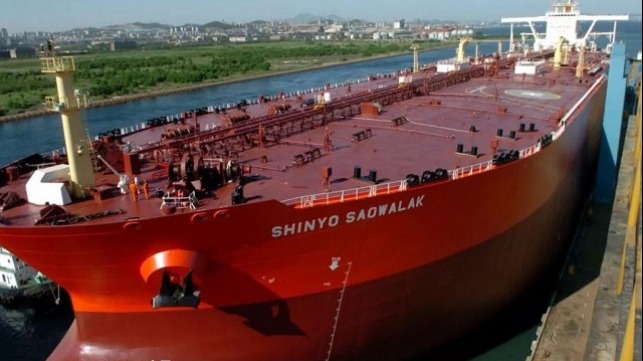 Credit: Nippon Paint
Credit: Nippon Paint
By Paul Benecki 2019-12-01 00:19:07
(Article originally published in Mar/Apr 2019 edition.)
Coating technology has come a long way since the days when lead-based paint was used above the waterline and tributyl tin below it, but steel hulls still need to be coated and recoated on a regular basis. It’s as essential as ever to the bottom line – and to keeping the ship off the bottom!
Barnacle Battles
Antifouling is essential to profitable trading, and shipowners have been working on improvements since antiquity. After roughly two thousand years of less-than-satisfactory experiments with lead plates, tars and waxes, the maritime community hit upon a revolutionary concept: copper sheathing, developed by the Royal Navy in the 1700s. Solid copper sheets were expensive but very effective at deterring shipworms and fouling, especially in severe tropical conditions.
Copper had one shortcoming: It caused galvanic corrosion of iron fittings like bolts and rudder posts. When copper sheathing was applied to ironclad hulls in the mid-1800s, this became a disastrous problem, and copper quickly lost market share to a new class of biocidal coatings containing heavy metals.
These were the ancestors of modern antifouling paints, and they required a lot of upkeep. The U.S. Navy assessed that the shellac-based products of the World War I era worked well for about nine months between applications. Interestingly enough, some of the manufacturers of those early coatings are still in business, though with much-improved product lines.
Today, antifouling systems fall into three main categories: controlled depletion polymer (CDP), a rosin-based coating that slowly leaches biocide while remaining otherwise intact; foul-release coating (FRC), a hydrophobic, slippery substance that defies sticking; and self-polishing copolymer (SPC), a biocidal coating that gradually wears or dissolves away for constant leaching. SPC coatings are the most widely used type, and in general they offer better performance than CDPs with less initial cost than FRCs.
Since fouling increases a ship’s fuel bill and its CO2 emissions, shipowners and coatings manufacturers have a strong incentive to find new and better ways to solve this age-old problem. The latest include some novel options: AkzoNobel is working on an LED panel system that would sanitize its own surface with UV light, and its International Paint brand has developed a bottom coating based on a slippery wax derived from sheep’s wool, the source of lanolin.
Nippon Paint Marine recently launched another novel alternative: Its new Aquaterras is a self-polishing copolymer. But rather than copper biocide, it contains a non-stick technology originally developed for artificial hearts and blood vessels. Medical device researchers have worked hard at developing adhesion-resistant polymers because, if proteins or cells build up within an implant, dangerous blood clots often follow.
This specialized chemistry keeps blood cells from sticking, and the same principle happens to be good at keeping barnacles from sticking too, according to Nippon Paint. By creating “micro-domains” of adjacent water-attracting and water-repelling surfaces, the polymer makes it hard for marine life to latch on.
In partnership with ClassNK and Imabari Shipbuilding, Nippon Paint conducted several multiyear tests on merchant bulkers with Aquaterras. The results showed excellent protection against fouling. In practical terms, this translates to claimed fuel savings in the range of 10 percent (relative to conventional SPC coatings) without releasing any biocides into the marine environment.
Chugoku Marine Paints (CMP) also markets a novel antifoulant that’s making waves. Its Seaflo Neo CF Premium is a self-polishing zinc acrylate polymer infused with Selektope, a new class of “biocide” that repels without killing. Selektope activates barnacle larvae’s swimming behavior, preventing them from making a home on the surface of the hull. CMP describes the coating’s performance in static conditions as “spectacular” and guarantees it will keep fouling off for at least 45 days of idle time.
Surface Prep
Recoating is an inevitable part of a coating’s lifecycle, below the waterline or above, and good surface preparation is the foundation of a good paint job. Surface prep can be a time-consuming project for deck crews and shipyard workers. But if they have the right equipment, quality and speed go up dramatically.
For removing barnacles, muck, rust and loose paint, pressure washing is a great option. A pressure washer may not strip steel to 100 percent bare metal in one pass, but it removes almost everything else and only needs water and power to operate.
Mark Williams, National Sales & Product Manager for Water Cannon, says his firm is seeing a lot of demand from maritime users. Large shipyards use 5,000-7,000 PSI, skid-mounted units as part of the surface preparation process for hull coatings, and marinas and boatyards put smaller-scale equipment to use on yachts and workboats.


